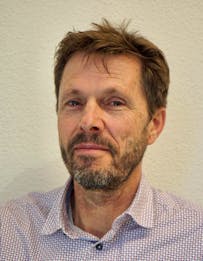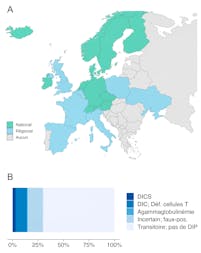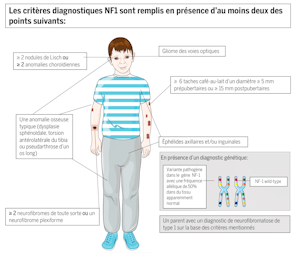Preface
« Doctors working in hospitals have no idea how things are in our surgeries and don’t know how isolated and lonely we feel. »
« Many primary care providers send every banalities to our emergency ward for diagnostic evaluation and management. »
« The Swiss Germans do everything differently anyway – and the french speaking Swiss have always had their own concepts. »
Pediatrics in Switzerland are drifting apart. That’s not what we want! Building bridges and reaching out is imperative!
Milk and honey
In the world, Switzerland is regarded as a prime example, a country of milk and honey. Embedded in Europe and yet not completely cramped. Self-confident and self-determined, autonomous, well organized and clearly structured in its manageable size. This external perspective is not limited to the political and social aspects, it also describes the medical areas. Switzerland can be proud of one of the best-operating health care systems, at high costs, but practically unlimited access to high-quality services for patients.
From the outside, Switzerland is seen as a small, structured, traditionally peaceful country where people share common social and democratic goals.
Is this also the case in the pediatric landscape? Or is peace deceiving? Isn’t there an almost insurmountable gorge – known as the “Röstigraben” – between the cultures, along the Roman and German language borders?
The exemplary hip gap
This gap is particularly obvious in the field of pediatric sonography: while hip sonography according to Graf has been recognized and firmly rooted in the German-speaking regions for over 30 years, it has barely gained a foothold in the French-speaking world. East of the Röstigraben, children are traditionally examined with ultrasound early in their lives, mostly by pediatric practitioners, if hip dysplasia cannot be ruled out in any other way. This applies de facto to almost every child here.
In the west, this approach is met with scepticism. Apparently there is a higher self-confidence with regard to the solely physical exam. Without going into the content of the subject, the differences in the interpretations and the management strategies of the most common « congenital » musculoskeletal disorder in the two parts of our small country are surprising. However, they reflect the different and controversial approaches discussed in the international literature.
Divided crosswise
Moreover, pediatric Switzerland is not only furrowed by the Röstigraben. A second gorge opens up between pediatric medicine in clinics compared to private practice. Switzerland therefore is divided crosswise, so to speak, in accordance with the national flag. This too can be clearly with the example of ultrasound: on one hand many pediatric practitioners have used it for a long time as an indispensable clinical examination tool which helps to answer everyday questions quickly and gently and sets the course in the child’s interests. On the other hand it is still delegated in most hospitals. As the domain of radiology, it thus eludes itself from motivated, competent pediatricians.
Ornithologists on a farm
The fundamental gap between the pediatric clinics (above all the university hospitals) and the primary care practice can rightly be regarded as problematic. The constantly increasing specialization distances pediatric residents as well as their seniors from primary health care. Generalists in leading positions at children’s hospitals are becoming rare. Different ways of thinking and doing procedures are developed and additionally a cultural and linguistic divide is created between basic and preventive health care and clinical care. A doctor skilled in neonatal intensive care medicine, endocrinology, cardiology, rheumatology, etc. will hardly gain a foothold in the often medically trivial everyday practice. Residents, who (have to) arrange a specialist consultation for almost every issue, will be overwhelmed by the fact that they have to make decisions on their own on an ongoing basis in private practice. Trained in ornithology, they must take over a chicken farm and are hardly prepared for this job. From this point of view, it is surprising how little demand there is for training positions in pediatric practices among residents. Then again, it is far less surprising that the outpatient clinics and emergency wards are overflowing with patients whose questions should actually be the core competence of basic pediatric care. There, the ludicrous phrase “you better see a specialist » has unfortunately become established in basic care. As if (non-pediatric) dermatologists, otorhinolaryngologists, orthopedists or urologists were fundamentally superior to us in terms of management of scabies, adenoid hyperplasia, inward gait, or urinary tract infections. We, the pediatricians, are primarily the specialists for children with all their health problems – and at the same time, we must act as lawyers of children, who visit us trustfully, so that we prevent them from unnecessary or unpleasant procedures.
Low self-confidence
Is it presumptuous to state that the pediatricians-to-be have been taught a latent deficit of self-confidence, a lack of readiness to make decisions or take responsibility? Patrick Imahorn, former Co-chief physician at the Children’s Hospital Lucerne, who has many years of primary care experience himself, had just one wish to all the pediatricians present at his farewell event:
« Be courageous, dare to make decisions in the interest of the children and do not hide behind the fear of missing something! »
Not only do we need more pediatricians in many places of primary care. We essentially need courageous, self-confident, decisive ones! And they don’t grow on trees, but want to be skilled – by superiors who cannot only convey the depth of a subspecialty, but the whole breadth of pediatrics, from the normal to the trivial to the complex.
Building bridges
The canyons within pediatrics in this small country are getting deeper, despite different efforts. Building bridges is imperative, breaking down reservations and judgments, smoothing out supposed hierarchical differences, networking, and most of all communicating in a better way – not only beyond the language barrier, but also between the centre and the periphery, primary care and specialized medicine.
Ultrasound – very specifically POCUS (point-of-care ultrasound1)), meaning sonography directly at the bedside – offers itself as a bridge over the canyons. As a relatively new clinical instrument, it can be used as a connecting element across borders, connecting cultures and language regions, and bringing together clinics and private practices. Pilot projects have already taken place successfully. At educational courses in Basel and Geneva, colleagues from hospitals and private practices sat side by side, silverbacks and young talents, from all over Switzerland. They studied together, exchanged thoughts and experiences. The different cultures suddenly did not matter anymore. Neither was there a language barrier, as English was used – an advantage or disadvantage equal to all.
Creative ties
POCUS is just one example among others of how Switzerland’s 4 pediatric fields – pediatricians in hospitals and private practices, east and west of the Röstigraben – which are too far apart from each other, could be combined. And the strengthening of these links can be regarded as a priority. Visions, energy and creativity are in great demand!
How about, for example:
- It would require at least 1 year of primary care pediatrics in the curriculum – and 1 year in another language region – to become a senior physician at a training clinic?
- If pediatric residents would have to pass at least six months in a pediatric practice?
- If POCUS would be integrated into the clinical routine of every pediatric emergency ward?
- If all pediatric emergency wards would be operated interdisciplinary and cooperation between hospital pediatricians and regional pediatric primary care providers would be deepened?
- If there would be an exchange program for assistant doctors between the pediatric training clinics in the german and latin speaking regions of Switzerland?
- If national congresses beyond the Röstigraben would generally have to be held in English? And publications, e.g. in this journal, would also be exclusively in English?
- If the number of credits would be doubled to a limited extent for continuing education in another language region?
It would certainly be attractive to reflect on such ideas or even to start a pilot project – exciting and instructive, but also elaborate and (hopefully not) seemingly impossible.
Exchanging thoughts about this beyond the trenches is important and that alone may already be a step towards each other. Bridging the political and cultural rifts will help to standardize and improve the quality of our work and help to ensure that Switzerland remains a land of milk and honey for the children and families we care for.
Acknowledgements
I thank Dr. Magali Gauthey, Hôpital de la Tour, Geneva and Dr. Sonja Fontana, University Children’s Hospital of Zürich, for sharing ideas, participating on the discussion about the challenges of pediatrics and pediatric ultrasound in Switzerland and critically revising this manuscript.
Literature
- Point-of-care ultrasound in pediatrics: are we ready? S. Fontana, R. Schmid. Paediatrica Vol. 30/2-2019
About the Author
Formation postgraduée de médecin spécialiste en pédiatrie aux Cliniques pédiatriques de Lucerne et Zurich
Formation en échographie à la Clinique pédiatrique de Zurich et à l’Université de médecine de Hanovre
Depuis 1996 installé dans un cabinet de pédiatrie à Baar
Past-président de l’ASEPA
Membre de la Commission hanche de la SSUM
Directeur de cours en échographie de la SSUM
Co-initiateur et fondateur du « Swiss Mongolian Pediatric Project“
Professeur honoraire du National Center for Maternal and Child Health Ulaanbaatar, Mongolie
The content of this article reflects the opinion of the author and does not necessarily reflect the opinion of the editors or the Swiss Society of Paediatrics.


